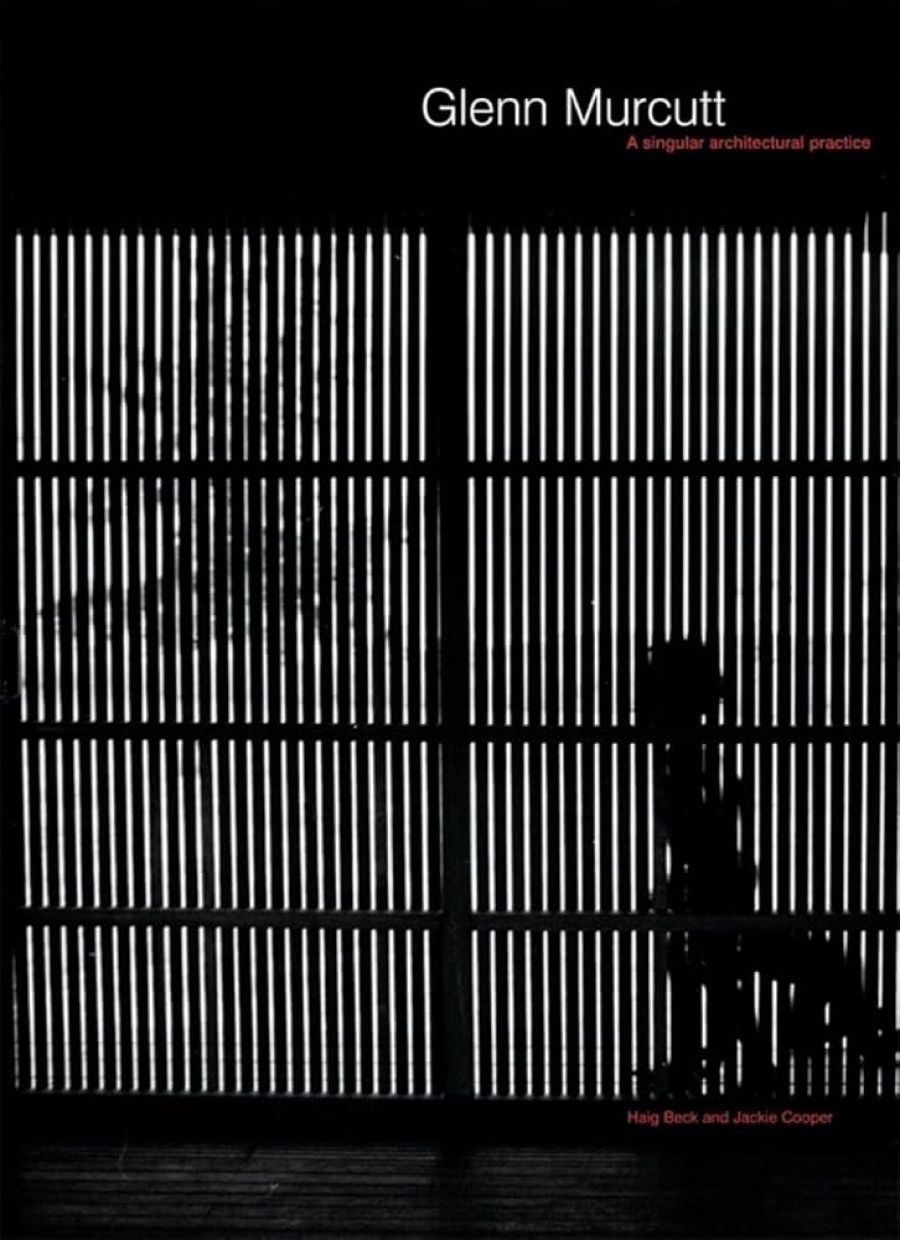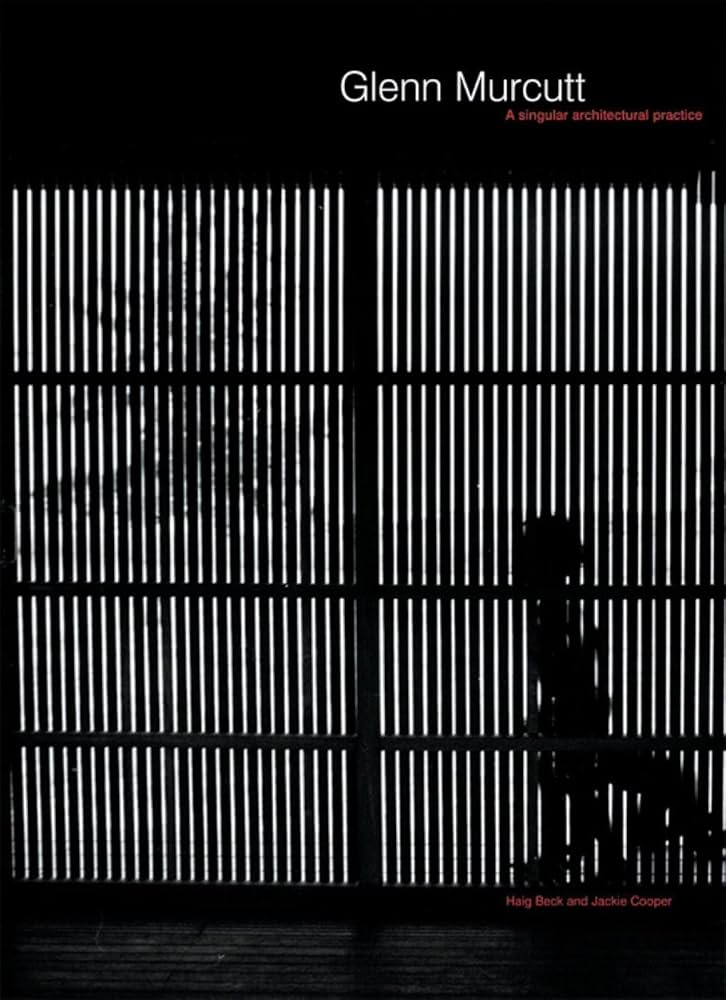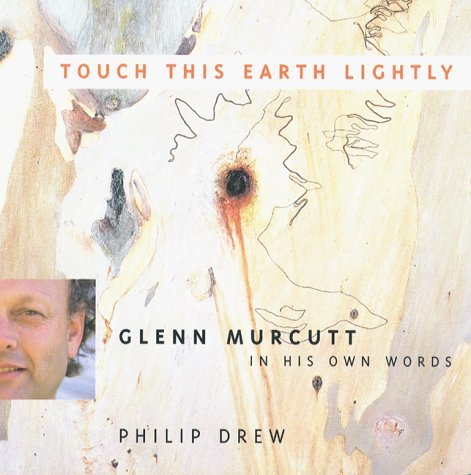
- Free Article: No
- Contents Category: Architecture
- Review Article: Yes
- Article Title: Obfuscating Stucco
- Online Only: No
- Custom Highlight Text:
Glen Murcutt has emerged in recent years as a very Australian hero, an apparently sincere and unassuming man, a loner in his practice, and in tune with the environment - a sort of Crocodile Dundee of architecture. He has also achieved an improbable international stature. He is almost better known in Finland than at home, and has now been recognised by the Pritzker Architecture Prize, an international award which is presumably important, even though most of us had never heard of it before. Here, for once, is an Australian architect who deserves to be studied and documented.
- Book 1 Title: Glenn Murcutt
- Book 1 Subtitle: A singular architectural practice
- Book 1 Biblio: Images Publishing, $99.95hb, 256 pp
- Book 1 Cover Small (400 x 600):

- Book 1 Cover (800 x 1200):

- Book 2 Title: Touch This Earth Lightly
- Book 2 Subtitle: Glenn Murcutt in his own words
- Book 2 Biblio: Duffy & Snellgrove, $33pb, 200 pp
- Book 2 Cover Small (400 x 600):

- Book 2 Cover (800 x 1200):

Murcutt was the subject of Philip Drew’s Leaves of Iron (1985). It was a flawed work, pretentious, naïve, adulatory and uncritical, but nonetheless a handsome publication. It is certainly one for which we must be grateful today, for it was a real book with a continuous text integrated with drawings and photographs, properly referenced, and with a bibliography and index. Nothing to satisfy those criteria has appeared since. There is no index even in Louise Fromonot’s Glenn Murcutt: Works and Projects (1995), which is easily the best book on this architect.
Oddly enough, Drew decided as late as 1999 to publish the interviews that he had conducted with Murcutt in 1983 in preparation for Leaves of Iron, and a new edition of this compilation, Touch This Earth Lightly, appeared in 2001. It is not the transcript of the interviews, but a doctored version strung into a continuous narrative in the first person, with only an occasional question inserted in the name of ‘PD’. So far as one can judge, it has been done well. But why was it done so late, or indeed at all?
Murcutt’s own words - if they really are all his - are as vague, portentous and imprecise as those of any other architect. It is hard to know whether a statement such as ‘Linearity produces a dynamic quality which increases the tension’ is a syllogism or nonsense, but either way it leaves us little the wiser. Presumably, Drew had already squeezed out of these interviews, for Leaves of Iron, whatever substance they may have contained. Whether we really need the réchauffé leftovers is open to question.
This brings us to Beck and Cooper’s Glenn Murcutt: A Singular Architectural Practice. It arrives wrapped about in a red paper ribbon, not unlike those placed over motel toilet seats to assure us that they have been sanitised. This one seems to imply that the book has won an award, but is in fact inscribed ‘2002: Laureate of the Pritzker Architectural Prize’, so it actually celebrates the award to the architect.
If this were a serious book, which it is not, one’s attention would focus on the six early sections grouped in the Contents under the heading of ‘theory’, rather than on the twenty-three under ‘practice’, still less on the collection of drawings reproduced, totally without explanation, under ‘technique’.
The first of the ‘theory’ pieces, by Beck and Cooper, is entitled ‘Ideology, theory, tactics’, and is presented in a stream of consciousness manner with no paragraph breaks, but a continuous text interrupted by horizontal red lines of various lengths. The word ‘discourse’ - that infallible diagnostic of pretentious twaddle - appears as early as the ninth line. The authors do not know what they are trying to say, and cannot even distinguish between nouns and adjectives. Murcutt, we learn, has been wrongly considered ‘an urban-shunning figure’. He ‘does not entertain … polarised design intentions’. We learn, too, that the verandah has become a cultural metaphor (for what is not explained), but that Murcutt’s buildings, which never have verandahs, ‘function …semiotically as superefficient verandahs’. They doubtless keep out the semiotic sunshine as well. ‘The narrative route of the plan constitutes a journey of oblique revelation of both buildings and land’, and so on.
This is not a book in any normal sense, and ABR readers will wonder why this publication is being reviewed at all.
It must be explained to them that there is a whole world of architectural writing (nay, discourse) in which words do not have precise meanings. They are a sort of variegated stucco to be trowelled into place in such a way as to obfuscate any simple proposition. Once any one of these sentences is translated into clear English it loses its magic and becomes utterly banal. It is no exaggeration to say that the reader can only end up more confused than before.
The more substantial part of the book is that dealing with the twenty-three projects, which are illustrated, often beautifully, both in black and white and in colour. There are enchanting little sketches by Murcutt, apparently produced after the fact - that is, they are not relics of the design process, which might be of considerable interest - but a sort of post hoc window dressing. There is a commentary on each building by Beck and Cooper, and another by Murcutt himself. Whilst the text is less convoluted than the theoretical pieces, it is far from lucid, and facts are thinly sprinkled through it like the currants in a very meagre spotted dick.
What might one reasonably expect, or ask for, in such a work? First, we need an explanation of Murcutt in his context. Is he in any sense a member of a school of design, or is he, as generally portrayed, totally sui generis? If he is indeed a loner, are there no others who have independently followed similar lines? He was, in fact, not the sole reviver of corrugated iron, though he was certainly the most successful. At times, his etiolated steel framing has come very close to the work of that rather more cerebral architect Philip Cox -so has there been any interaction between the two? And how can one assess the regular claims that Murcutt’s buildings ‘touch this earth lightly’ and are environmentally friendly? Their extensive areas of glass - quite apart from the metal -seem positively designed to take up and to shed vast quantities of heat, depending on the external temperature. At an architectural conference, one Adelaide academic had the temerity to ask whether there had ever been an energy audit of a Murcutt house. It seems there had not, but the question was regarded as impertinent and unworthy of consideration – not at least from a king clad even more sparsely than his houses.
In the discussion of individual projects, one might expect an indication of their cost. One might expect plans (other than Murcutt’s dinky little sketches). One might even expect some technical discussion, perhaps of those details that were unsuccessful and leaked (an excellent indicator of really good architecture). In the book as a whole, one might expect the normal referencing apparatus – or at the very least an index.
For all its defects, this is a handsome piece of work. The design is virtually inhouse, for it is by Garry Emery, a long-time associate of Beck and Cooper (who are themselves married). Indeed, the kindest way to look upon this is not as a book but as an art object celebrating, rather than explicating, the work of Australia’s modest architectural megastar.


Comments powered by CComment